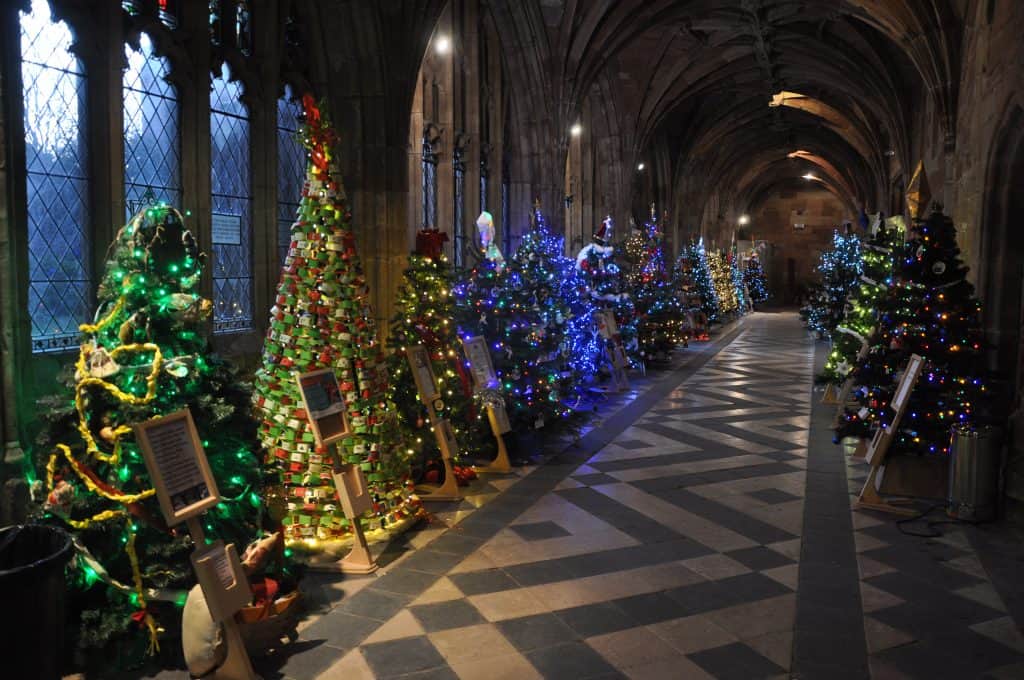More than 600,000 people are expected to attend a Cathedral in England during Advent, the period leading up the Christmas Day.
Rich choral music, the pageant of ritual, nativity tableaux and familiar traditional liturgy attract hundreds for services throughout the season.
Figures recently released from the Church of England suggest 617,000 people attended a Cathedral during Advent in 2018, for services, concerts and nativity plays. And on Christmas Day, 133,000 attended a Cathedral service.
Cathedrals’ enduring popularity and their place in our cultural landscape, is shown by regular attendances of 37,000 per week and total visitor attendance of 10 million in 2018 – a 10% increase on the previous year.
This year, Cathedrals hit the headlines after adopting innovative approaches to attracting visitors. Crazy golf in Rochester and a helter-skelter in Norwich may have raised eyebrows, but they also attracted people into a place of worship sometimes for the first time
The Chair of the Association of English Cathedrals, the Dean of Lichfield Adrian Dorber, told the Church Times that they try to offer spiritual nurture and hospitality to people who have never had much contact with the Church. ‘Creative interpretations’ of big stories, such as a huge hanging model of the earth in the ‘Gaia’ exhibition highlighting the fragility of the planet, or festival marking 50 years since man first walked on the moon, open up conversations and engages communities.
This Christmas season, Lichfield Cathedral hosted a light and sound show ‘Cathedral Illuminated 2019: The Beginning’, in which the famous rose windows of Notre Dame Cathedral in Paris were projected across the nave. Following the fire in April, the Cathedral will, for the first time in 200 years, not hold a Christmas Mass.
At Worcester Cathedral, a Christmas tree festival runs from early December to early January. Local businesses, charities, schools, and community groups decorate their own tree and the general public vote for their favourite. There is space in the medieval Cloisters for a hundred trees and the event attracts many thousands of people every year.
The Chair of the Association of English Cathedrals, Adrian Dorber, who is Dean of Lichfield said:
‘Cathedrals minister in a culture that is more and more diverse, spiritually attuned, but religiously unaffiliated. They offer a mixture of absolute reliability, being open every day, and missionary enterprise. We attract large numbers of committed and skilled volunteers and the public likes to visit not only at Christmas and for national commemorations but also for events, performances and exhibitions where they are free to think new thoughts, wonder, reflect and pray. Cathedrals aren’t complacent about what opportunities lie before them, but these statistics accurately portray where they are making an impact and what they are trying to do.’
The Very Revd David Monteith, Dean of Leicester, said the theme at the cathedral during the Christmas season is Angels:
‘At this time in our society and in the world at large, there’s been a huge amount of turmoil and uncertainty. In the Bible every time an angel appears, just about, they always say the same thing: Fear Not.
Leicester Cathedral sits at the physical heart of our city and county but through our mission we have sought to make it live in ways that could be described as a ‘beating heart’… Ours is a very multi-faith and multi-cultural community and very often on the saddest and the happiest days, the Cathedral can gather and hold the wider community in ways which allow us to express before God our heartfelt thanks and our heartfelt sorrow.’
.
The Rt Revd Gregory Cameron, Bishop of St Asaph in North Wales, will visit patients at a community hospital and lead a service on Christmas Day in a prison:
‘With the joy of Christmas comes the challenge of caring for the dispossessed and those in need.
The Cathedral may not be the biggest Church in the diocese, or the oldest, but because of its connection with the bishop, it is regarded as the Mother Church of the diocese, from which all spiritual care radiates out. It is rather like the main power station, in which the clergy are ordained and sent out to serve in the sub-stations, the parish churches.
In the cathedral, there is often a distinctive sense of the centuries of Christian faith and prayer, as each generation has added in its own particular style and architecture. I still vividly remember my own ordination, where we processed through the Celtic Church, then the Norman, then the mediaeval, then the modern, processing through the centuries, to the place where we were ordained to continue this history of faith and sent out into the world. For reasons like this, for many people, the Cathedral holds a special place in their hearts.’

















